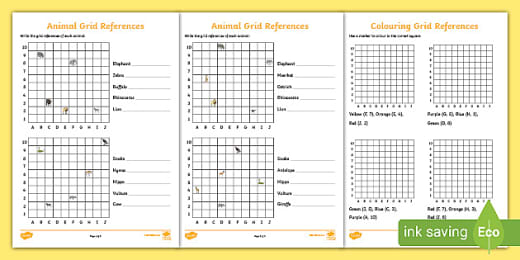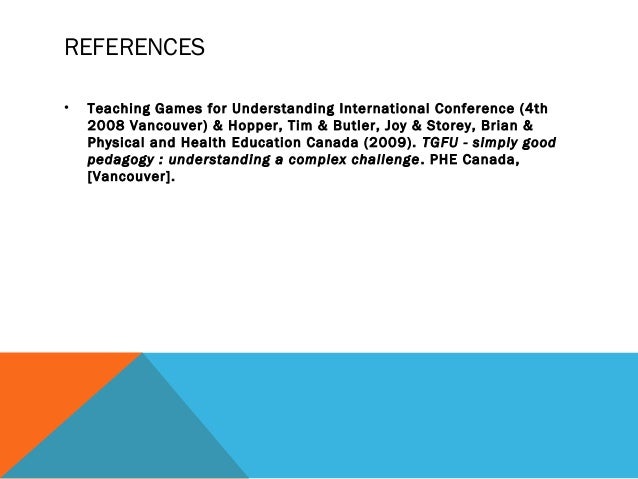- Teaching Games for Understanding is an approach to physical education developed by Peter Werner, David Bunker, and Rod Thorpe, and was adopted in the year 2002 by a group of representatives, associations and individuals from all around the world. It is a global agenda for scholarly inquiry in the field of teaching with the help of games.
- Barnes, Louis B., C. Roland Christensen, Abby J. Hansen, Teaching and the Case Method: Text, Cases, and Readings Boston: Harvard Business School Press; 3rd edition.
- Their understanding and appreciation of the wide range of cultural influences that have shaped their own heritage. Their understanding of, respect for and interest in exploring cultural diversity, and the extent to which they understand, respect and celebrate diversity as shown by their attitude towards different communities.
- Russian and English are two languages that have more differences than similarities. Some of these differences will be difficult for a child of either country to grasp.
Welcome, This website has been established to assist educators in teaching the Sacrament of Reconciliation to students. It can be specially utilised to facilitate the teaching of the Stage 2, Year.
When you have a break between games, whether that’s the holidays or pre/post season, you have a chance to experiment with new ideas and coaching practices. One approach I have recently started using more and more is the TGFU approach originally introduced by Bunker and Thorpe (1982).

I have never tried to simply teach skills or instruct drills in training sessions, I have always tried to implement those concepts and skills that I wanted the participants to learn in game scenarios or ways that will help them understand the game better and make decisions on their own. However the TGfU approach emphasises those same views within a 6 step model as pictured below.
Figure 1 – TGfU Model
Halle (in Light and Butler, 2005: 247) states that teaching games for understanding ”allows students to think for themselves, to figure it out for themselves. It’s real learning that involves making choices and decisions and making better ones with experience.”
At first I used this approach in sections of training sessions and over time found that the participants learning of skills and knowledge of the game quickly improved more when they were able to use those skills and make those decisions in game like scenarios. As a coach you can try to explain what are the correct decisions, describe and demonstrate those choices but there is no better way for the performers to learn that than to allow them to try and develop that for themselves through participating in sport.
Put your performer in a game where it requires them to think on their feet, problem solve and make the right choice without the coaches instruction and that is how players can gain useful skills. Skills that aren’t generated in drills but in games, so when performers are put in more pressured situations like a game against another team they will be able to make those same problem solving decisions.

The TGfU approach is definitely one I will continue to try to apply in my training sessions, and hopefully it will continue to help develop perfomers’ understanding, knowledges and skills within sport.
References
Teaching Games for Understanding (TGfU), [Homepage of Teaching Games for Understanding]. [Online]. Available: https://docs.google.com/document/d/1vhh6b0zLwxXDovdys9jCySkZvbU0z-TKqAZy7oWveEU/edit?pli=1 [April, 25th, 2015].
LIGHT, R. and BUTLER, J., 2005. A personal journey: TGfU teacher development in Australia and the USA. Physical Education & Sport Pedagogy, 10(3), pp. 247.
Teaching Games for Understanding is an approach to physical education developed by Peter Werner, David Bunker, and Rod Thorpe,[1] and was adopted in the year 2002 by a group of representatives, associations and individuals from all around the world. It is a global agenda for scholarly inquiry in the field of teaching with the help of games. This international task force evolved in 2008 and became the first special interest group of AIESEP.[2]
Referencesteaching Games For Understanding Students
Process[edit]
[3]The fundamental concept of this model is 'understanding'. The process of this model is
Referencesteaching Games For Understanding Kids
- Game Form: Introduction of the game in the process of building upon the entire form of the game.
- Game Appreciation: Clear understanding of the rules and regulations of the game played.
- Tactical Awareness: Understanding of the techniques of the game in accordance to the rules and regulations.
- Decision Making: It is a necessity to make timely decisions in accordance to the changing environment due to the dynamic nature of the game.
- Skill Execution: In relation to the learners capabilities and understanding execution of the required movements involved in the game takes place in this step of the process.
- Performance: The learning outcome will be analysed which will be subjective in nature as each learner's understanding level will be different. Through this, one can understand and measure the appropriateness of response was and the efficient use of technique by the player.
Referencesteaching Games For Understanding People
References[edit]
- ^Werner, Peter; Thorpe, Rod; Bunker, David (1996). 'teaching games for understanding'. Journal of Physical Education, Recreation. 67: 28–33. doi:10.1080/07303084.1996.10607176.
- ^'Partners'. AIESEP.
- ^'teaching games for understanding'.